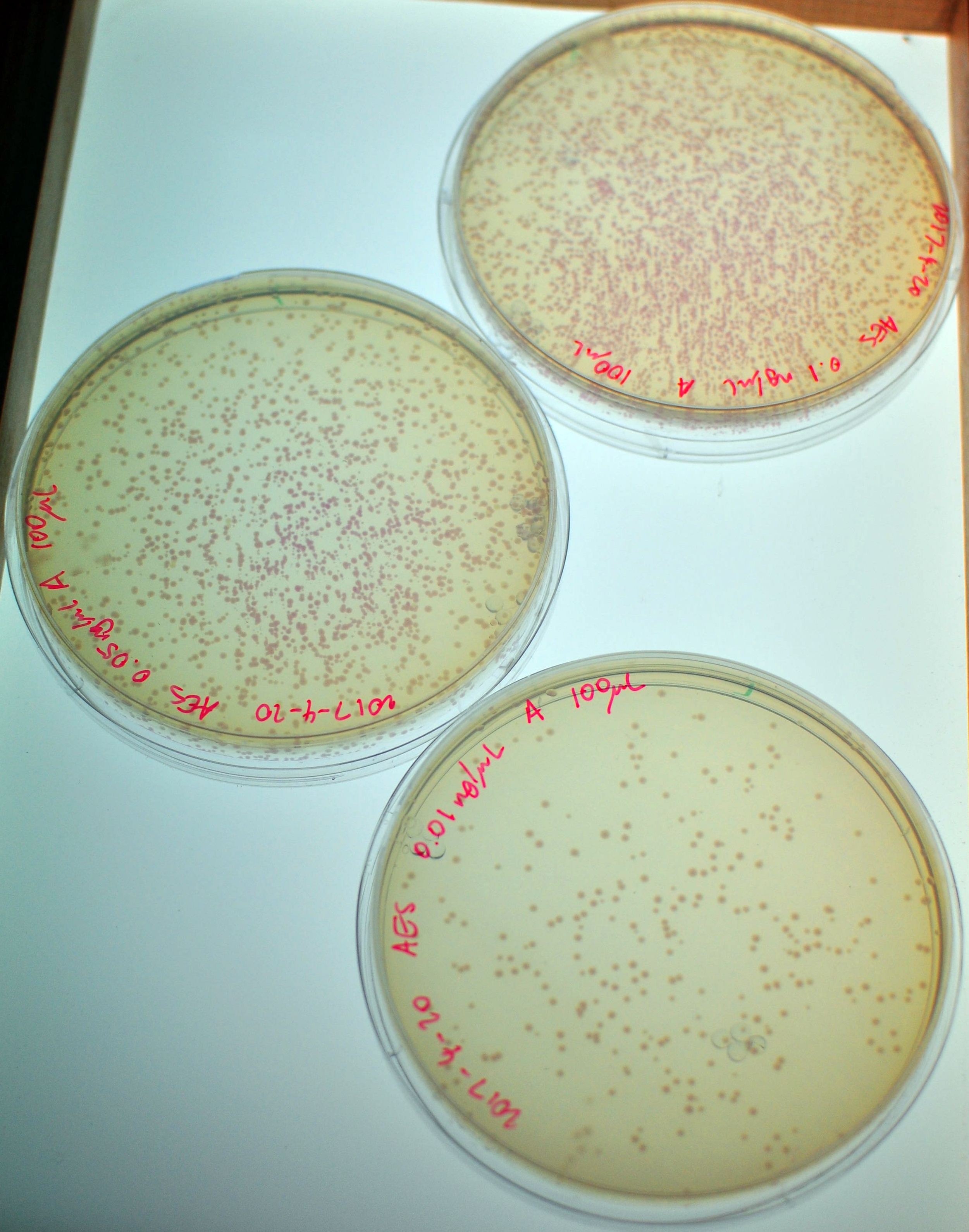Help:Competent Cell Test Kit
- Registry Help Pages:
- TOC
- At-a-Glance
- FAQ
iGEM HQ and the iGEM Registry no longer prepares and ships part and component requests to teams and labs. Information related to part and component requests on the Registry and other iGEM pages is either deprecated or kept for archival purposes.
We encourage our iGEM teams to use our sponsor synthesis offers to synthesize the samples you need, or to find them through the iGEM distribution kits, if available.
Competent Cell Test Kit
Before using your competent cells in an assembly ligation, transformation, or other experiment, make sure to test the efficiency of your competent cells! It is important to have efficient competent cells because transformations performed with ligation products usually do not yield as many colonies due to the low DNA concentration in the ligation mixture. You can use the following suggested protocol for heat-shock transformation to test your chemically-competent E. coli cells.
While iGEM HQ will not be able to provide a Competent Cell Test Kit, please use and adapt this protocol to your needs. All you will need is a 100 pg/µL and 10 pg/µL high copy plasmid control. If you've purchased competent cells in the past, they likely came with a transformation test control at one of these concentrations. Perform transformations with each of these to determine how efficient your competent cells are.
Materials needed
- 70% ethanol
- Paper towels
- Lab marker / Sharpie
- 1.5 mL microcentrifuge tubes
- Container for ice
- Ice
- Competent cell aliquot(s)
- 100 pg/µL control
- 10 pg/µL control
- Agar plates with chloramphenicol
- 42°C Waterbath (or hot water source and thermometer)
- 37°C Incubators (oven and shaker)
- SOC media
- Sterile glass beads or sterile cell spreader
- Pipettor
- Pipette tips
Protocol
estimated time: 30 minutes active, 1.5 hours incubation
- Clean your working area by wiping down with 70% ethanol.
- Thaw competent cells on ice. Label one 1.5 mL microcentrifuge tubes for each transformation and then pre-chill by placing the tubes on ice.
- Do triplicates (3 each) of each concentration if possible, so you can calculate an average colony yield.
- Spin down the DNA tubes containing your controls to collect all of the DNA into the bottom of each tube prior to use. A quick spin of 20-30 seconds at 8,000-10,000 rpm will be sufficient.
- Pipet 1 µL of DNA into each microcentrifuge tube.
- Pipet 50 µL of competent cells into each tube. Flick the tube gently with your finger to mix.
- Incubate on ice for 30 minutes.
- Pre-heat waterbath now to 42°C. Otherwise, hot water and an accurate thermometer works, too!
- Heat-shock the cells by placing into the waterbath for 45 seconds (no longer than 1 min). Be careful to keep the lids of the tubes above the water level, and keep the ice close by.
- Immediately transfer the tubes back to ice, and incubate on ice for 5 minutes.
- Add 950 µL of SOC media per tube, and incubate at 37°C for 1 hour shaking at 200-300rpm.
- Prepare the agar plates during this time: label them, and add sterile glass beads if using beads to spread the mixture.
- Pipet 100 µL from each tube onto the appropriate plate, and spread the mixture evenly across the plate. Incubate at 37°C overnight or approximately 16 hours. Position the plates with the agar side at the top, and the lid at the bottom.
- Count the number of colonies on a light field or a dark background, such as a lab bench. Use the following equation to calculate your competent cell efficiency. If you've done triplicates of each sample, use the average cell colony count in the calculation.
- Efficiency (in cfu/µg) = [colonies on plate (cfu) / Amount of DNA plated (ng)] x 1000 (ng/µg)
- Note: The measurement "Amount of DNA plated" refers to how much DNA was plated onto each agar plate, not the total amount of DNA used per transformation. You can calculate this number using the following equation:
- Amount of DNA plated (ng) = Volume DNA added (1 µL) x concentration of DNA (refer to vial, convert to ng/µL) x [volume plated (100 µL) / total reaction volume (1000 µL)]
Results
Competent cells should have an efficiency of 1.5x10^8 to 6x10^8 cfu/µg DNA, where "cfu" means "colony-forming unit" and is a measurement of cells.
Here are some sample results:
| DNA concentration | 10 pg/µL | 100 pg/µL |
| # of colonies | 280 - 360 | 1000+ |
You can download Transformation Efficiency Calculation.xls for convenient calculation of the efficiencies.

